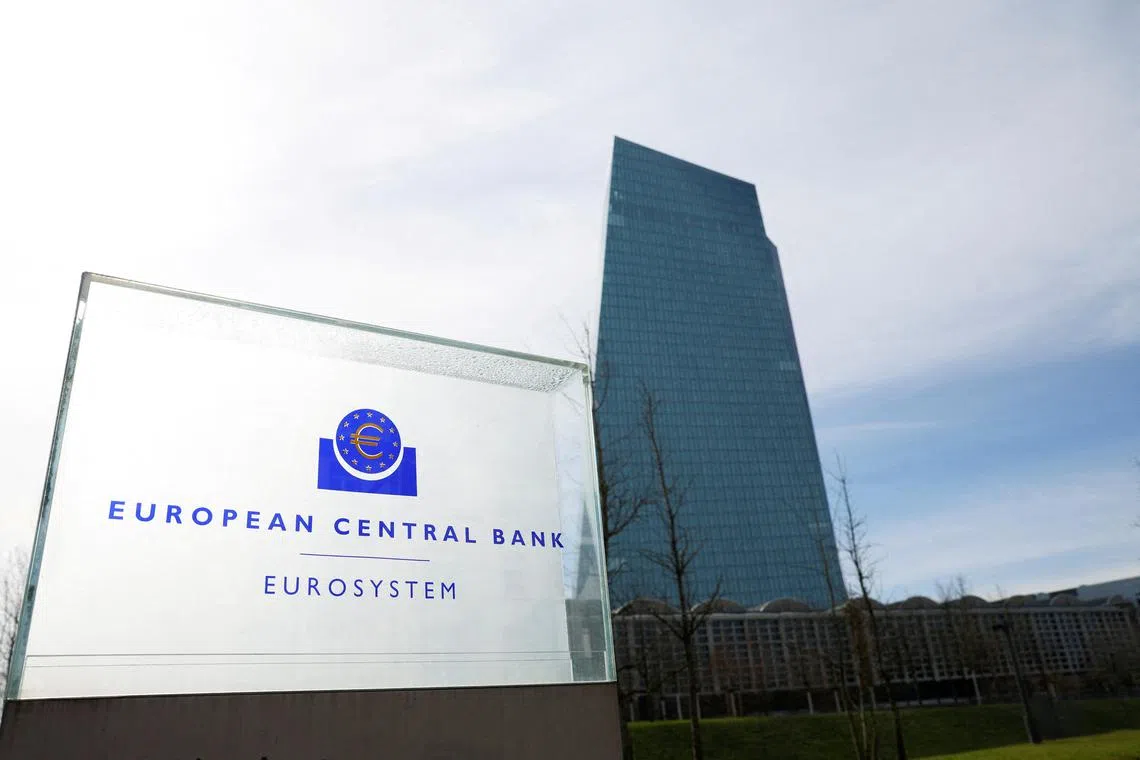European Central Bank raises key rate to record high and signals end of hikes
Sign up now: Get ST's newsletters delivered to your inbox

The central bank for the 20 countries that share the euro also raised its forecasts for inflation.
PHOTO: REUTERS
Follow topic:
FRANKFURT – The European Central Bank (ECB) raised its key interest rate to a record peak on Thursday and signalled that this will likely be its final move in a more-than-year-long fight against stubbornly high inflation.
The central bank for the 20 countries that share the euro also raised its forecasts for inflation, which it now expects to come down more slowly towards its 2 per cent target over the next two years, while cutting its expectations for economic growth.
That illustrated the dilemma the ECB faced at the meeting, with prices still rising at more than twice its target rate but economic activity struggling under high borrowing costs and a downturn in China.
Against this backdrop, the ECB sent a clear message that it was probably done raising rates.
“Based on its current assessment, the governing council considers that the key ECB interest rates have reached levels that, maintained for a sufficiently long duration, will make a substantial contribution to the timely return of inflation to the target,” the ECB said.
This was expected to happen more slowly than at the time of the ECB’s previous projections in June, with inflation now seen at 5.6 per cent in 2023, 3.2 per cent in 2024 and 2.1 per cent in 2025.
The upgrade to the 2024 estimate – which had been reported by Reuters earlier – was likely to have played a significant role in discussions as policymakers weighed the risk that inflation, currently still above 5 per cent, would get stuck at a high level.
Thursday’s 25-basis-point increase pushes the rate the ECB pays on bank deposits to 4 per cent, the highest level since the euro currency was launched in 1999.
Just 14 months ago, that rate was languishing at a record low of minus 0.5 per cent, meaning banks had to pay to park their cash securely at the central bank.
In the run-up to the meeting, money markets had expected the deposit rate to peak at 4 per cent before being cut in the second half of 2024.
In contrast, markets have fully priced in unchanged rates at next week’s meeting of the United States Federal Reserve, which started raising rates earlier and has moved higher than the ECB.
New forecasts
Supporters of a hike this week are likely to have argued that it was needed because inflation, including underlying measures that strip out volatile components, remained too high, with a recent surge in energy prices threatening a new acceleration.
But the brisk tightening cycle – twice as steep as normally envisaged by the ECB’s own stress tests of the banking sector – has already left its mark on the euro zone economy.
With the manufacturing sector, which typically needs more capital to operate, already suffering as a result of higher borrowing costs, lending to companies and households has fallen off a cliff.
Services have now also started to struggle, following a brief post-pandemic boom in tourism.
The euro zone’s biggest economy, Germany, was bearing the brunt of an industrial slump and heading for recession, according to several forecasts.
Once its rate increases end, the ECB is likely to begin a debate on mopping up more of the cash it pumped into the banking system through various bond-buying schemes over the last decade, although no decision on that matter was expected this week. REUTERS

